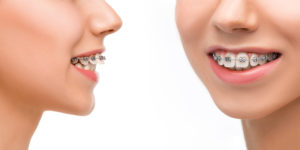How To Fix A Misaligned Jaw

Many orthodontic patients suffer from a misaligned jaw that affects how teeth sit in the mouth and causes bite problems. Overbites, where the upper teeth protrude, and underbites, when the lower teeth sit out farther than the upper teeth, can cause physical and emotional discomfort. If left untreated, a misaligned jaw can affect how you eat, speak and sleep. Luckily, there are many types of orthodontic treatments and appliances that are used to correct misalignments and give you your confidence back. Find out what to do if you have a misaligned jaw with this guide!
What A Misaligned Jaw Looks Like
Many people receive orthodontic treatment to fix their crooked teeth, but braces can also resolve bite issues, as well. Braces are great ways to fix misaligned jaws in children and adults and help prevent the consequences of underbites and overbites. Misaligned jaws are often painful and obvious, and many children are unfortunately teased by their peers because of it. Our “bite” refers to how the upper and lower teeth meet together, which influences how we chew, eat and speak. The two most common bite problems are an underbite and overbite, with an underbite occurring whenever the lower jaw sits in front of the upper jaw while the overbite happens when the upper jaw protrudes abnormally over the lower jaw. While these deformities look awkward, they have consequences that are more serious than aesthetic concerns. Underbite create a bulldog appearance as the lower jaw protrudes out, which not only puts a lot of stress on the joints but also causes tooth wear. Overbites create buck teeth that stick out so far that they can easily break and make it difficult to close the mouth and lips. They also create an elongated face, speech problems and increase the likelihood of tooth decay as oral tissue dries out. Depending on the severity of the misalignment and which bite is involved, treatment options such as braces, cosmetic dentistry and surgery are common ways to fix the problem.
Treatment Options
For crooked or crowded teeth and misaligned jaws, braces are the standard treatment performed for most patients. Traditional braces with brackets cemented to the teeth and attached with an archwire help with overbites to straighten the upper front teeth and bring them into a non-protruded position. For extreme cases of overbites and underbites, headwear braces may be necessary. These devices are made with internal and external wires, along with straps that fit over the head and neck, to move the upper jaw either forward or backward. Headwear braces are typically worn for 12-14 hours a day, but are only needed whenever traditional braces cannot fix misalignment. For underbites, an upper jaw expander is recommended to widen the palate of the mouth so that the lower teeth move back into position. The expander is placed in the upper palate of the mouth and widened each night with a special key, and after one year, the palate should be wide enough for both the upper and lower jaws to fit together. For the most serious cases of jaw misalignment, orthognathic jaw surgery will be required. Plates, screws and wires will be surgically placed into the jaw by a maxillofacial surgeon to permanently correct bite problems, which will greatly improve speech and sleep.
Importance of Orthodontic Visits
While many bite problems are obvious, some are so slight that detection will be hard to notice. In these cases, it’s important that children and adults have regular orthodontic visits so that teeth movement and development can be monitored. Orthodontic visits, especially in young children, are essential to observe incoming teeth, reduce the risk of impacted teeth, monitor jaw development and detect hidden dental issues. Not only will your teeth be examined, but your jaws and mouth will be reviewed for signs of underlying conditions, decay and disease, as well as thoroughly cleaned. These visits also provide patients the information they need to establish good dental habits early on to keep their teeth healthy and free from decay both during and after orthodontic treatment.
Get Straighter Teeth With Our Help!
At Belmar Orthodontics, we specialize in helping children and adults alike fix malocclusion, adjust misaligned jaws and get the smiles that they deserve. Whether you or your child has an underbite, overbite or crowded teeth, our team can help you remedy any issue that you are experiencing. Through specialized orthodontic treatment plans and advanced appliances, your mouth issues can be fixed within a short period of time. Call our office today at (303) 225-9016 to get a straighter smile today!
